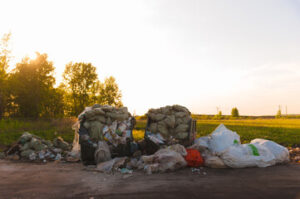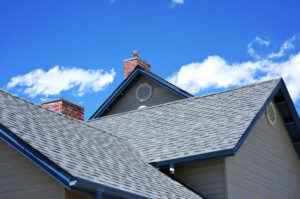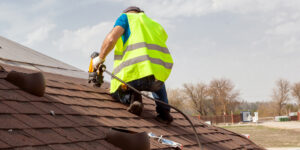During roofing maintenance, a professional will examine the condition of shingles and other materials. They will also trim any tree branches that might overhang the roof, and make sure the seals around roof penetrations like chimneys, vents, skylights and equipment are in good shape.

Then, they will use a thermal imager to locate hot spots on the roof. These can be a sign of leaks and should be marked on the map for future inspections. Visit https://www.bostonroofingco.com/ to learn more.
Whether metal or wood, flashing provides protection from water infiltration that could otherwise damage the structure of a house. But over time, flashing may deteriorate due to weather conditions, age, and improper installation. Keeping an eye out for flashing issues and seeking prompt repairs from experienced professionals like A & J Reliable helps prevent leaks and other roofing problems.
Visible Gaps
The most obvious sign of a flashing problem is visible gaps or openings around vents or pipes that protrude from the roof. A flashing unit is a wide piece of metal with a center opening (either a metal fitting for a vent top or a PVC tube for a chimney pipe). The flashing slips over the protrusion and is installed underneath the roofing. The roof shingle is then applied over the flashing and to both sides of the gutter.
When a gap develops, it can be caused by the flashing’s natural wear and tear, corrosion of the metal from rust or exposure to salt air, and deterioration of the roofing shingles that cover it. Regardless of the cause, it’s crucial to seal the gaps as soon as possible so that rainwater doesn’t seep under the roof shingles and cause further damage.
In addition to looking for gaps in the flashing, you should also check the surrounding areas of the roof for a smooth finish and signs of moisture intrusion. Look for rotted fascia boards or soffits and for damp or discolored areas in the ceiling or walls near fireplaces or chimney flues, or for evidence of previous leaks such as water stains. Check for daubs of caulking that don’t completely seal and require repair.
To help minimize the risk of flashing damage, prepare an emergency kit that includes temporary sealants, Mylar sheets for securing repairs, melting compounds, hammers, pliers, shovels and reinforcement mesh, block heaters for thawing ice-coated flashings, and roof safety essentials like shoes, gloves, harnesses, and rope. Having these items on hand in case of a severe storm helps limit overall home damage while allowing professional restoration crews to complete permanent repairs.
Clean the Gutters
Gutters play a vital role in keeping rainwater away from the roof and home foundation. However, a gutter system that is clogged with leaves and debris can cause a host of problems. For one, wet, rotting leaves and other debris are an ideal breeding ground for mosquitoes. Additionally, wet gutters can erode and degrade the soffit, fascia, siding, and window frames. And finally, if water is allowed to pool near the foundation it can damage the basement or crawl space and create leaks around windows.
The best way to prevent these problems is to clean the gutters on a regular basis. This is especially important in the fall when leaves begin to fall and in winter when ice dams can form in clogged gutters.
If you want to avoid the messy work of removing leaf litter and other debris from the gutters, purchase a wet/dry vacuum with a long hose extension. This will allow you to reach the gutters from the ground and remove the debris without having to climb a ladder.
However, if you prefer to clean the gutters by hand, start at one end of the roof and work your way across, removing the gunk as you go. Be sure to wear rubber or work gloves as the gutters can be slippery and full of twigs, branches, and other debris.
Once you have finished cleaning one section of the gutter, move on to the next and make sure the whole section is clear of debris. If your gutters have downspouts, be sure to also check them to make sure they are free of clogs.
Downspouts are essentially half-pipes that run along the edge of the roof and direct rainwater toward the ground and away from the house. They are especially important if there are trees nearby that shed large amounts of debris. Like the gutters, downspouts can become clogged with leaves and other debris. Be careful to use a gentle pressure and nozzle size when cleaning the downspouts, as too much pressure can damage the gutter and potentially the roof shingles.
Inspect the Soffit and Fascia
Soffits and fascia might not be the most fascinating parts of your home, but they’re critical to keeping your roof healthy. These architectural elements protect the rafters of your roof from pest infestation, help prevent moisture damage problems like wood rot and curling shingles, and give your house that finished look on the roof’s eaves.
In addition to preventing pests from invading your roof, your soffits and fascia are also vital to ensuring your house has proper ventilation and moisture control. If you’re not careful, your soffits and fascia might become damaged or even rotten over time, leaving you with expensive repair and replacement costs.
During a roof inspection, your inspector will examine your fascia and soffit for signs of damage or rot. They’ll also look for any rust or cracks in the thin metal flashing that lines penetrations, such as skylights and chimneys, which can cause leaks.
Fascia boards, which run horizontally along a roof’s edges, can be made from a variety of materials. Most often, they’re constructed from wood, but there are also options made from plastic and vinyl that can be painted to coordinate with the rest of your home’s exterior color scheme. Wood fascias, which are the most common type of fascia on American homes, should be regularly inspected and maintained for any signs of wear or damage.
One of the most common problems with wooden soffits and fascia is water damage. This usually occurs when gutters are clogged with debris like dead leaves, animals’ droppings, or old bird nests, so rainwater has nowhere to go but down the trim boards. This can then cause them to degrade over time, leading to soft spots, holes, or other structural problems.
Fortunately, this is a problem that’s easy to fix by regularly cleaning your gutters and resealing the joints in your roof’s eaves. It’s also important to inspect your soffits and fascia for any signs of pests and to take steps to address them as soon as you spot them. If you do notice damage or rot to your soffit and fascia, be sure to contact a professional for repairs and replacement as quickly as possible to minimize the risk of further problems.
Inspect the Shingles
Shingles are the most recognizable part of a roof and provide the first line of defense against water damage. By utilizing a specific layering pattern, shingles create a barrier between your home and the elements. However, they don’t last forever and will eventually need to be replaced. As a result, it’s important to inspect your shingles on an annual basis for any signs of wear or tear that may indicate they’re reaching the end of their lifespan.
To begin your inspection, you should look at the shingles from the ground and, if possible, use binoculars to identify any areas that appear damaged or discolored. It’s also important to examine the gutters to be sure they aren’t clogged with debris. A clogged gutter can cause the roofing materials to become saturated and eventually lead to water damage.
Next, you should climb up on the ladder and walk around the roof to visually inspect it. You should check for any missing, curled, or cracked shingles and also look at the flashing to be sure it is still sealed around vents, chimneys, skylights, walls, equipment curbs, and drains. It’s important to inspect the flashing in these locations because a majority of leaks originate there.
A good rule of thumb is to replace any shingle that is in poor condition or has visible damage from hail. You should also check for a general level of granule loss (these are small, gravel-like specks that help the shingles resist moisture and harmful UV rays). A large amount of granule loss could be a sign that it’s time to replace your roof.
Lastly, you should be on the lookout for any dark streaks or stains that might be caused by algae growing on your roof. While this won’t cause any immediate damage, it can rot the underlying shingle sheathing over time and should be treated immediately. Spraying your roof with a 50/50 mix of water and bleach should kill the algae. You should also consider putting copper strips on your roof’s peak so the rain will wash any remaining algae particles away.








